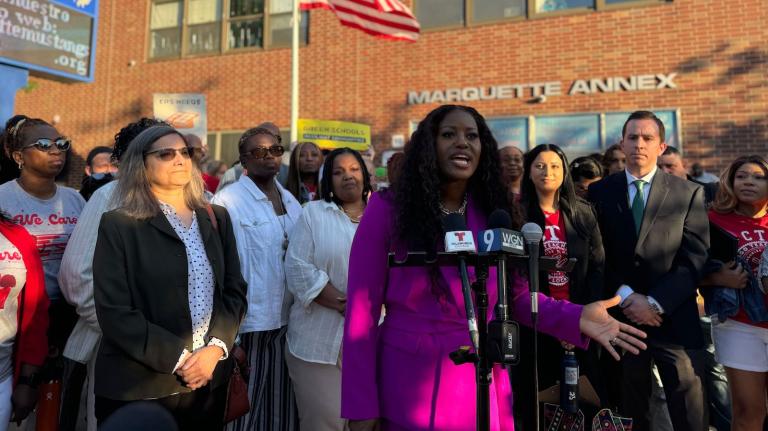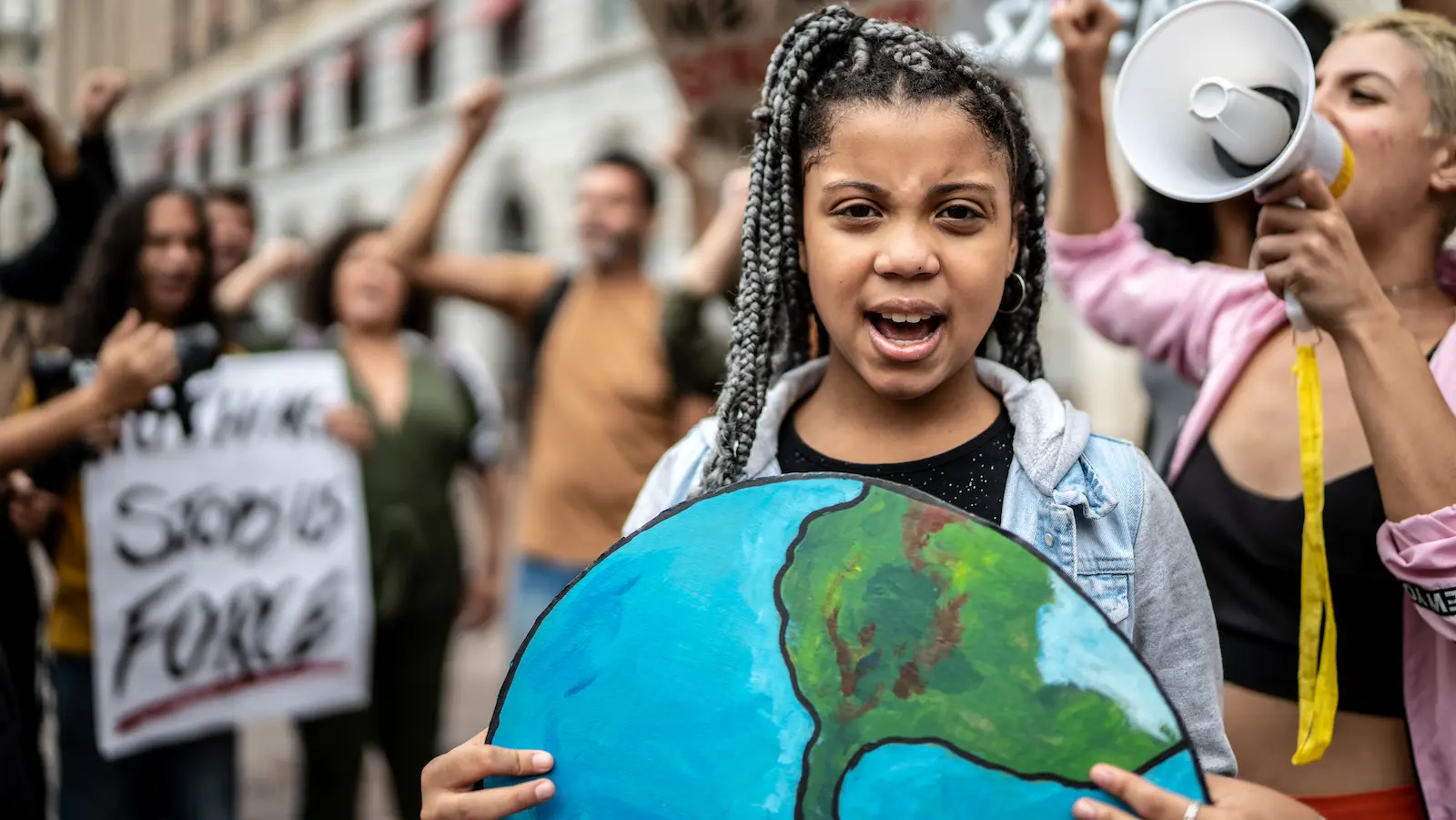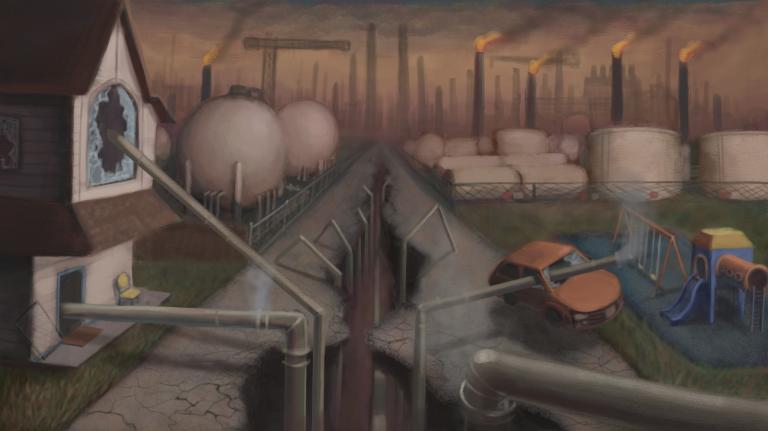Kathrin Zangerl is a pediatrician at the Heidelberg Institute of Global Health in Germany, where she is a specialist on how climate change affects children at different stages in their lives. For instance, an infant’s developing lungs make her more susceptible to lasting harm from air pollution. A teenager, on the other hand, might be more likely to become part of the mental health pandemic among adolescents, where climate anxiety is a factor.
In other words, children have differing needs, more vulnerability, and interventions that work for adults might not work for kids.
“Children are not tiny adults,” she said.
So when Zangerl and other researchers combed through the official national climate adaptation plans of 160 countries, they were looking for consideration of the needs and roles of children, especially when it comes to health. How many countries are taking kids into account when they think about climate change?
In an article published earlier this month in The Lancet, Zangerl and her team revealed their findings: Not many.
It’s not that national climate adaptation plans have the force of law, but they can guide policymakers and attract focused funding from richer countries to low and middle-income countries. International bodies, like the United Nations, its Framework Convention on Climate Change, UNFCCC, the World Health Organization, and UNICEF, are increasingly urging countries to consider the specific needs of children in their climate policies.
The numbers were dismaying.
Nearly a third of the plans — 28 percent —did not mention children at all. Another third — 31 percent — mentioned children in only one area, such as education. And none mentioned children’s mental health.
As Zangerl wrote in the article: “Children’s mental health is a crucial public health concern that requires immediate action.”
Sudan, one of the poorest countries in the world, scored the highest in the report for its number of mentions of children in its plan. But Zangerl said that’s grading on a curve.
“No country comprehensively addressed child health needs,” she said. “A few countries were better than others, but they weren’t really good.”
“I’m not surprised,” said Tooba Akhtar, a PhD researcher at Trinity College Dublin, who was not involved in this study. She focuses on the development and well-being of children affected by climate change.
Akhtar and two of her colleagues, Kristin Hadfield and Alina Paula Cosma, wrote a recent open letter to the U.N. Climate Change Secretariat. They looked for evidence supporting programs that would help young children cope with the emotional toll of climate disasters, and found none.
“Our hunch is that these programs do not actually exist,” Akhtar said.
This is personal for Akhtar, who grew up in Pakistan. She was recently speaking to a friend working for a nonprofit there, documenting the aftermath of the devastating 2022 floods. Camps for displaced survivors have set up makeshift schools.
“Who’s attending? Children who are already school-aged. Those under 6 are forgotten.” Akhtar said that simple programs for very young children, like shared book reading, could promote social-emotional skills and parent-child bonding, helping entire families cope with post-traumatic stress. But that’s rarely happening. “The father’s off managing the land that’s been destroyed, the mother is taking care of six other kids.”
Children’s needs, especially young children’s, are left out of climate planning, experts said, because of a lack of advocacy, a lack of funding, a lack of collaboration across government ministries, and a lack of data — conditions which all reinforce each other.
“The child lobby is really lacking,” in international climate negotiations, Zangerl said. A 2023 report from Save the Children found only 2.4 percent of the money from big international climate funds went to projects that incorporated children’s needs.
As a result, research into climate impacts on children isn’t well funded, and this, in turn, impacts decision-making. For example, in Europe where Zangerl lives, there’s an enormous amount of research on elderly people dying in heat waves. Far less is known about children’s morbidity, such as the way heat waves experienced in early childhood might not necessarily end a life, but could shorten a life.
For Zangerl and Akhtar, there are two big arguments for countries to do better at planning for and meeting children’s needs in climate adaptation.
One is that it’s practical and pragmatic. If we want a healthy, resilient adult population to cope with the worsening effects of climate change in 20 years, we need to invest in children today. And most of the world’s children — more than 75 percent of all adolescents — happen to be located in low- and middle-income countries that are more susceptible to the impact of climate.
Education and public health awareness are the most common way that children are being included in these national adaptation plans. This perspective tends to treat children more as a resource to be tapped for the benefit of society, than as a population with needs to be served. Children are being prepared for the green workforce. Or they’re helping disseminate health information.
“In many low- and middle-income countries, the child is the only one who receives formal education,” said Zangerl. “They then teach their wider family and community, and so the multiplier effect of teaching children is really high across the globe.”
The other argument for including children in a country’s climate plans is different. It’s about fairness and children as a more vulnerable population.
“Children are inheriting an over-warmed world, and they will live longer in it than previous generations,” said Akhtar, noting that children will be forced to bear the long-term consequences of decisions made before they were born. “Equipping them with the knowledge and skills to mitigate and adapt is essential to help them survive.”
Zangerl said that when talking about children and climate policy, it’s tempting to keep focused on “risk and vulnerability and protection.” But what’s also important “is agency and empowerment” — having young people as part of the decision-making process on policies that will affect their survival.
“We’re seeing lots of youth advisory boards and adolescents who are change agents or participating actively” in policymaking and activism, she said, noting that it’s possible to listen to even younger children if you are creative about how you do it. For instance, she is currently working on a study with children from ages 3 to 6, where they are making art and taking photos to express how they are coping with changes to weather and nature.
Correction: A previous version of this story misstated the number of countries with climate adaptation plans that mention children.




